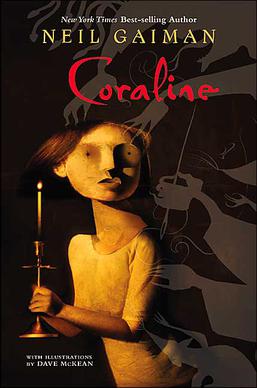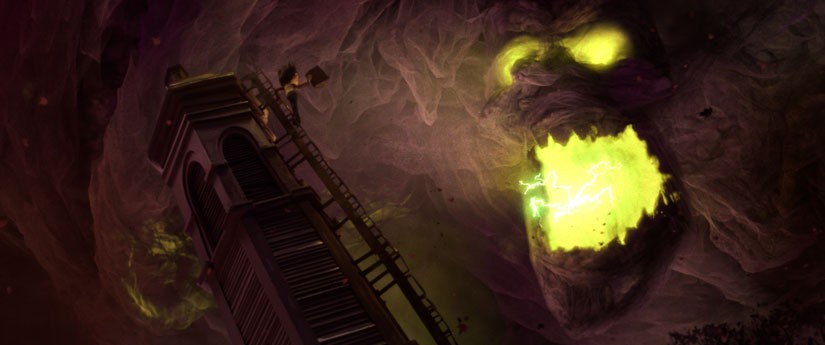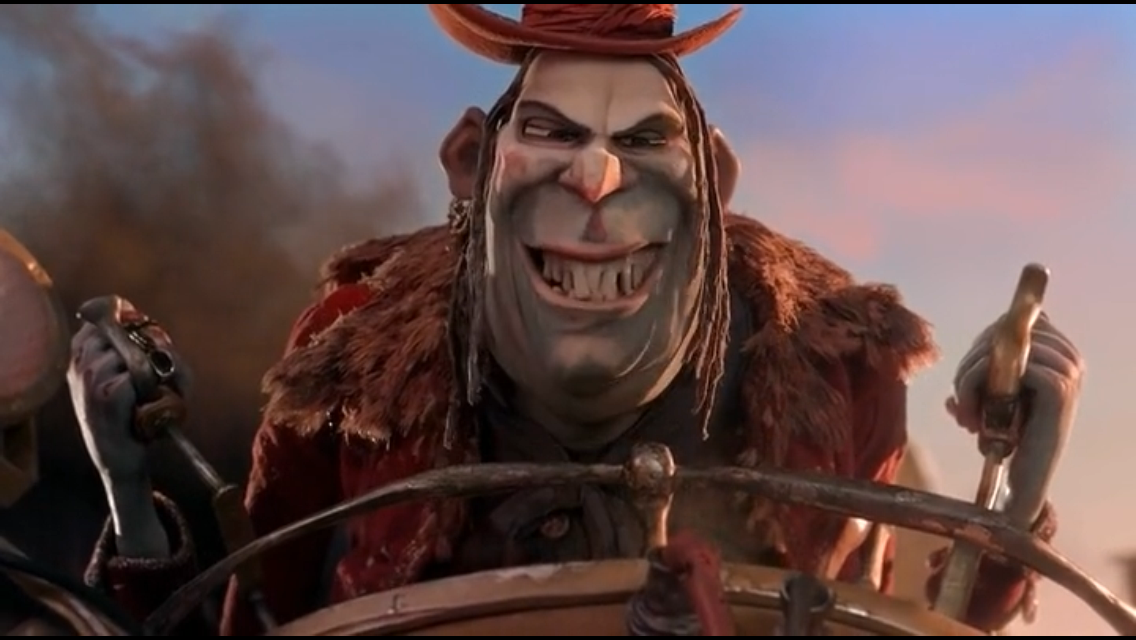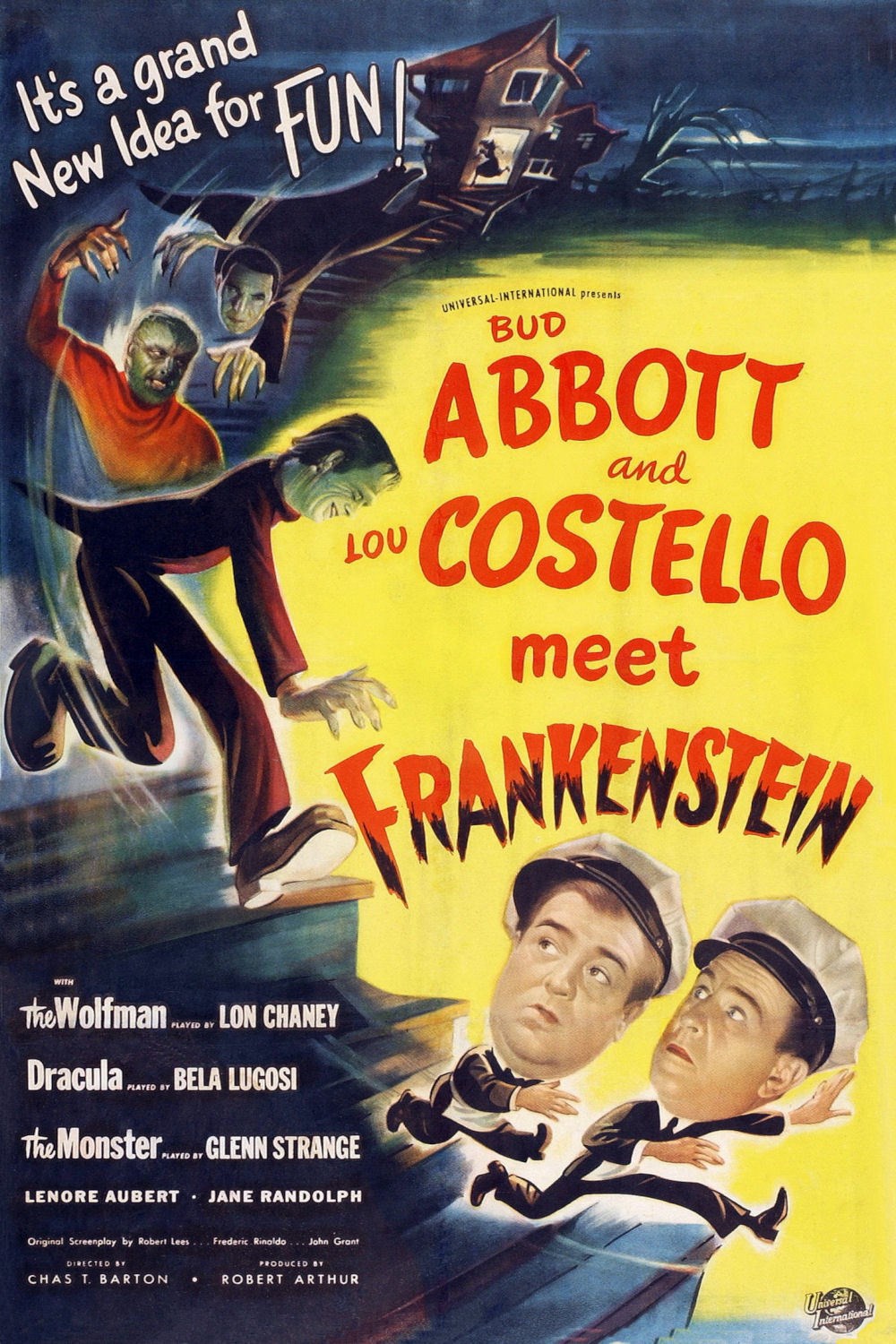 |
| Source |
I love comedy horror. Partly because I'm just slightly too much of a wimp to make a habit of watching straight-up horror, partly because my preferences lean heavily towards comedy in any case, and partly because a lot of it is so damn campy.
A common theme in horror is the idea of normality gone wrong - of mundane, everyday, comforting things somehow getting warped into something unsettling or menacing. Creepy lullabies, possessed children's toys, abandoned nurseries, the idea of a loved one becoming possessed or turning evil, and what have you.
Comedy horror, in a way, inverts this idea. It takes things originally intended to be frightening and transposes them into the realm of the mundane or comical. Comic relief can be a useful tool in horror-dominant media, as the more lighthearted scenes or jokey remarks provide a breather from the macabre. And the genre provides infinite opportunity to deconstruct and send up our well-established and much-loved horror tropes. Hammer horror Dracula who vaunts to suck your blood! will rarely be portrayed seriously now, and a lot of pop culture monsters have similarly reprised their roles in the comic domain (usually portrayed with over-the-top hamminess.)
Comedy horror can fall into a few broad categories. There are the first-and-foremost horror flicks that heavily employ dark humour as an accompaniment (Scream, Drag me to Hell, Jennifer's Body,) the comedy-dominant works which make use of horror tropes (Young Frankenstein, Ghostbusters, Evil Dead) or the broad spectrum of media that falls somewhere in between. Parody and deconstruction crop up an awful lot in all of these types, which I'll get to later.
A Short History
Sending up horror tropes, or the mingling of horror and comedy, is nothing new. Since the early days of horror novels, humour has been intertwined with the sinister. A literary example from the 1800's is Oscar Wilde's The Canterville Ghost, which pokes fun at the already well-established ghost story genre, as a high-class American family reacts primarily with annoyance rather than fear at the spectre who haunts their English mansion. The legend of Sleepy Hollow by Washington Irving (originally published in 1820) has been cited as one of the first great comedy horror novels.
 |
| [X] |
In 1948, Abbott and Costello Meet Frankenstein hit the screens, in which Bela Lugosi reprised his role as Dracula. It has since been identified as the first commercially successful comedy horror film, and cemented the genre as commercially viable, ushering in a new brand of movies (including a series of 'Abbott and Costello Meet X' titles.). These works traditionally featured classic horror monsters, but with very little actual gore or violence. Laurel and Hardy and the Three Stooges occasionally got in on it too, with films such as A Live Ghost in 1934 and Spooks in 1943, respectively.
The sixties brought us sitcoms like The Munsters and The Addams Family, (the latter of which got their own feature film made in 1991, followed by a sequel in '93) which portrayed traditional monsters and gothic horror-style themes in a zany light.
The next couple of decades saw an emergence of over-the-top campiness in its horror comedies, among them Attack of the Killer Tomatoes (1978) and Please Don't Eat My Mother (1972), but with The Rocky Horror Picture Show being the most well-remembered. The 80s continued on this theme, bringing us Little Shop of Horrors, Haunted Honeymoon and the HBO TV series Tales From the Crypt (the overarching themes of the latter could be summed up as 'Blood! Blood and gore! Blood and gore and sex! More sex and more blood and gore! Wheeeeeee!') The '80s also provided us with the first Ghostbusters and Gremlins movies, both leaning towards the comedy end of the scale. According to Box Office Mojo, these two still make the top four best-selling comedy horror slots.
From here we begin to move into spoof territory, which I'll get to in more detail later on.
The Zom-Com
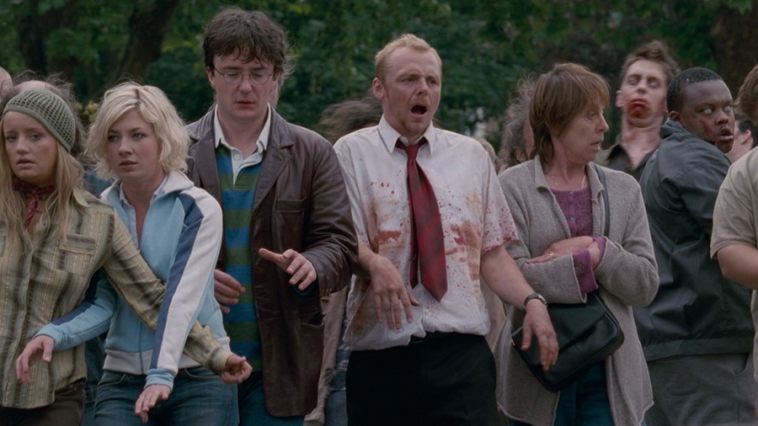 |
| Shaun of the Dead [X] |
Jean Yarbrough's King of the Zombies (1941) and Gordon Douglas's Zombies on Broadway (1944) are early examples of the genre, dealing with early Haitian-style zombies. A more recent(ish) well-known example would be Shaun of the Dead (2004), which given its prominent romantic subplot, earned itself the title of "zomromcom." (at which point you start to wonder if there's some sort of prefix one-upmanship game going on.) Zombieland (2009) is another popular example. These films had a primarily comedic element, but didn't shy away from gore or avoid more intense and sombre subject matter. (Simon Pegg's character being forced to shoot his own zombiefied mother being a pretty grim example.)
Deconstruction/Parody
As long as there's been horror, there's been stuff that makes fun of horror. Or in some cases deconstructs it more seriously. In fact, a lot of rather cliched horror conventions have now become more familiar to us in the realm of parody than played straight. The creepy castle surrounded by bats that a rain-drenched couple encounter in search of shelter, for example, has taken on a familiar kind of campiness (which The Rocky Horror Picture Show took full advantage of in 1975), and in the wake of a series of send-ups, the classic 'group of teenagers gradually picked off in an isolated holiday spot' slasher movie plot gets spoofed nowadays more often than it's portrayed seriously.
Mel Brooks parodied two of the more well-known classic monster narratives with Young Frankenstein in 1974 and Dracula, Dead and Loving It in 1995. The latter, whilst considerably less successful at the box office, still managed to achieve cult status. It's effectively a condensed version of the original story, with added jokes.
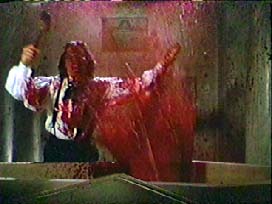 |
| "We should have put newspapers down." (Fun fact: the actor (Steven Weber) apparently had no idea that was going to happen.) |
A lot of comedy horror films draw their humour from self-consciously hashing out and lampshading established movie conventions, or taking the traditional horror narrative and reframing it from a different perspective. The Cabin in the Woods (2012) and Tucker and Dale Versus Evil (2010) both make heavy use of this playing on the audience and the characters' established knowledge of traditional horror conventions in order to subvert and mess around with them. Severance (2006) was a British-German comedy that also riffed on the theme of 'don't go off to stay in a remote location with your mates/colleagues/high school buddies, or you'll all be killed off in various imaginatively gory ways.' The Final Girls (2015) is one of the most recent examples of this particular brand of slasher movie parody.
For a literary example, the Discworld series has probably played with almost every traditional monster trope in existence (they feature a support group for the undead, for one,) either played for laughs or in some cases portrayed more seriously, and therefore deserves a brief mention.
Most recently, we've seen a couple of attempts at reprising old favourites (Goosebumps, the Ghostbusters remake) and if Scouts Guide to the Zombie Apocalypse (2015) is anything to go by, the zomedy genre is still going strong too.
And now I leave you with the song that's been playing in my head since I started thinking about writing this post.
Happy Halloween.


